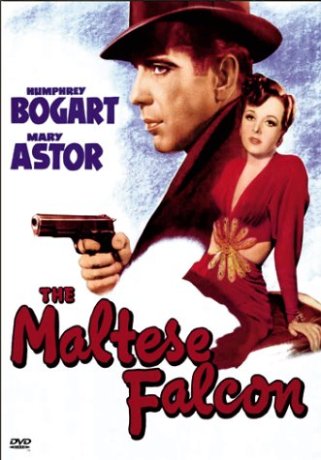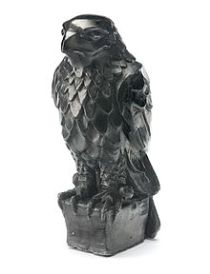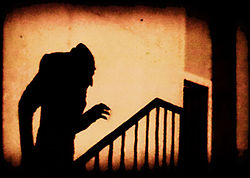Clerks is a movie which was produced in 1994. It is a black-and-white movie and is directed by Kevin Smith. He does not have the lead role in the movie, and does not appear that as much, but he is know as the character Silent Bob, who hangs out with his best friend Jay, who is played by the actor Jason Mewes. Later on, Kevin Smith directed another film, focusing only on the two characters Jay and Silent Bob and it was called “Jay and Silent Bob:Strike Back”. The setting of Clerks is in a convenience store, where Kevin Smith worked in real life, and it was shot for $27,575. Upon release in theaters, the film gorssed over $3 Million, and it started Kevin Smith’s carrier as a producer. There are not that many actors in the movie, because of the low budget, so usually Smith’s friends played multiple roles.
Actors:
- Brian O’Halloran as Dante Hicks
- Jeff Anderson as Randal Graves
- Marilyn Ghigliotti as Veronica Loughran
- Lisa Spoonhauer as Caitlin Bree
- Jaosn Mewes as Jay
- Kevin Smith as Silent Bob
- Scott Moiser as Willam the Idiot Manchild / Angry hockey-playing customer / Angry mourner
- Scott Schiaffo as Chewlies gum representative
- Al Berkowitz as Old man
- Wait Flanagan as Woolen cap smoker / Egg man / Offended customer / Cat admirer
- Ed Hapstak as Sanford / Angry funeral woman
- Pattijean Csik as The Coroner
- Ken Clark as Administer of Fine / Orderly
- Ernest O’Donnell as Rick Derris
- Kimberly Loughran as Heather Jones
- Frances Cresci as Little smoking girl
- Joey Lauren Adams (The Lost Scene) as Alyssa Jones (voice)
- Gary Stern as Tabloid Reading Customer
 The Godfather is movie directed by Francis Ford Coppola in 1972. It resembles The French New Wave more than New Hollywood. “The Godfather” has 32 wins and 19 nominations in total.
The Godfather is movie directed by Francis Ford Coppola in 1972. It resembles The French New Wave more than New Hollywood. “The Godfather” has 32 wins and 19 nominations in total. The Maltese Falcon is a movie directed in 1941 by John Huston. The movie is based on the novel by the same name from Dashiell Hammett. It was one of the first movies ever directed. The picture is in black and white, but you can still hear the voices of the characters. For one of the first movies ever directed it was nominated for three Academy Awards. There were other two versions of the movie, but this was the last one. Warner Bros. had been prevented by the Hays Office censors from re-releasing the 1931 version due to its “lewd” content; it was not until after 1966 that unedited copies of the 1931 film could be shown in the U.S. Though largely compliant with the Production Code, Huston’s remake did contain some innuendo: when the police implicate Spade in his partner’s murder, Spade asks Det. Polhaus, “What’s your boyfriend gettin’ at, Tom?”. During his preparation for The Maltese Falcon, first-time director John Huston planned each second of the film to the very last detail, tailoring the screenplay with instructions to himself for a shot-for-shot setup, with sketches for every scene, so filming could proceed fluently and professionally. Huston was adamant that the film keep to schedule, and that everything be methodically planned to the fullest to ensure that the film never went over budget. By providing the cast with a highly detailed script, Huston was able to let them rehearse their scenes with very little intervention.
The Maltese Falcon is a movie directed in 1941 by John Huston. The movie is based on the novel by the same name from Dashiell Hammett. It was one of the first movies ever directed. The picture is in black and white, but you can still hear the voices of the characters. For one of the first movies ever directed it was nominated for three Academy Awards. There were other two versions of the movie, but this was the last one. Warner Bros. had been prevented by the Hays Office censors from re-releasing the 1931 version due to its “lewd” content; it was not until after 1966 that unedited copies of the 1931 film could be shown in the U.S. Though largely compliant with the Production Code, Huston’s remake did contain some innuendo: when the police implicate Spade in his partner’s murder, Spade asks Det. Polhaus, “What’s your boyfriend gettin’ at, Tom?”. During his preparation for The Maltese Falcon, first-time director John Huston planned each second of the film to the very last detail, tailoring the screenplay with instructions to himself for a shot-for-shot setup, with sketches for every scene, so filming could proceed fluently and professionally. Huston was adamant that the film keep to schedule, and that everything be methodically planned to the fullest to ensure that the film never went over budget. By providing the cast with a highly detailed script, Huston was able to let them rehearse their scenes with very little intervention.


